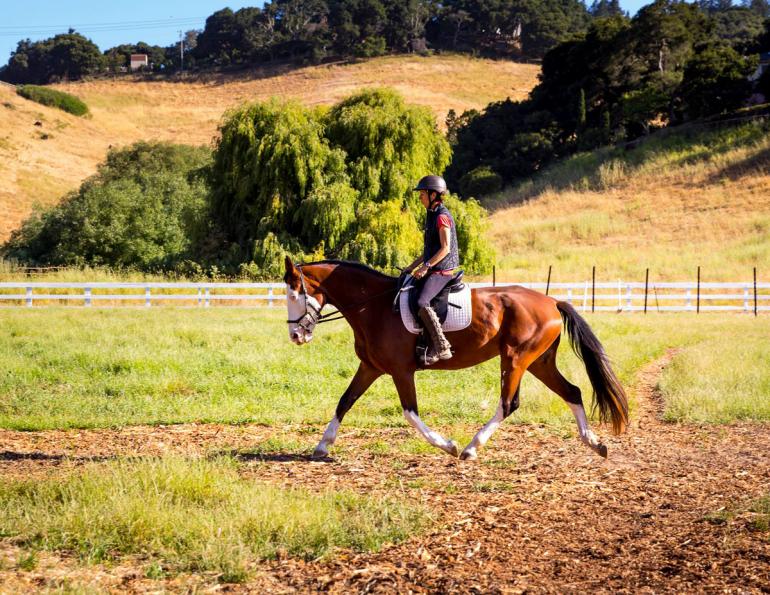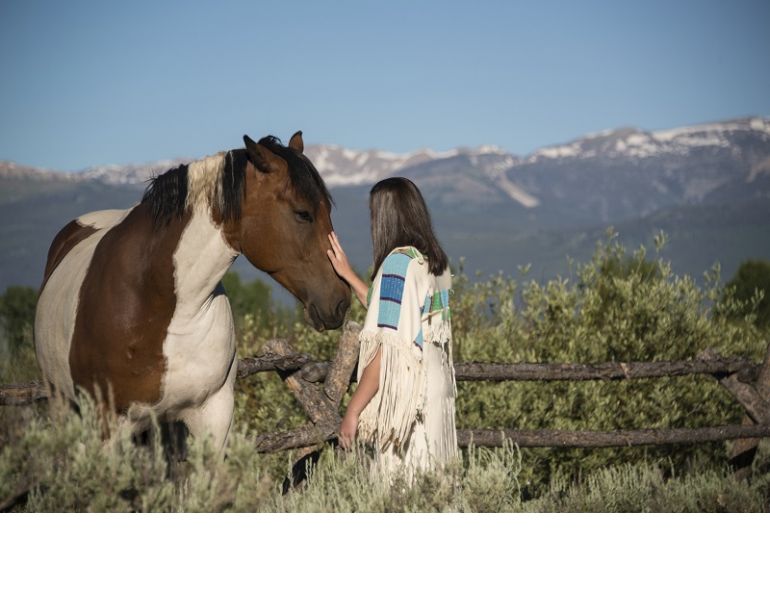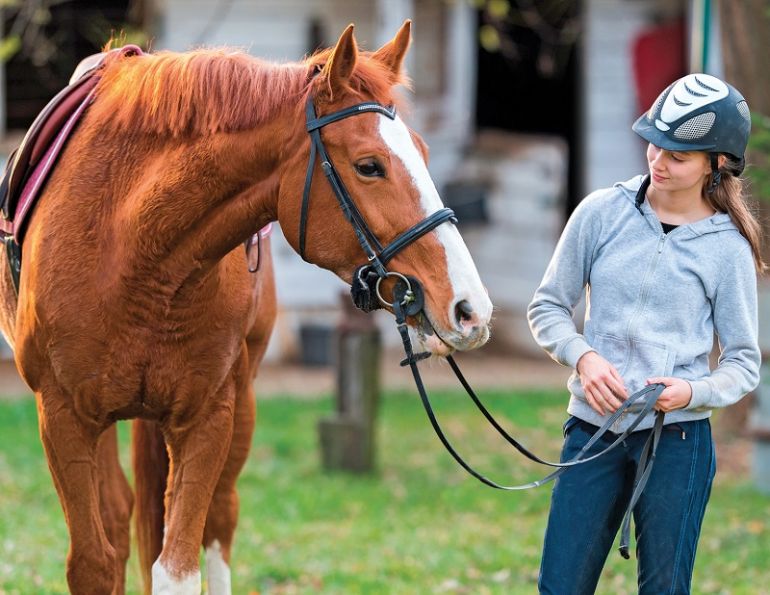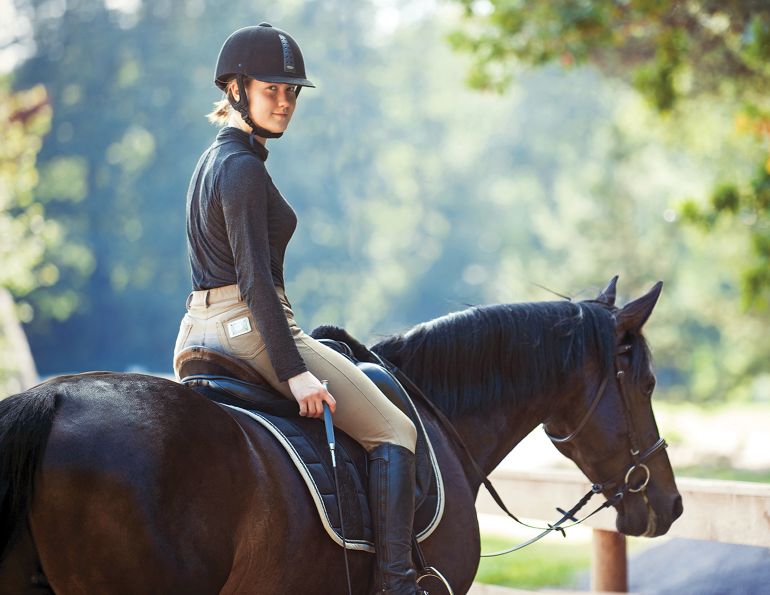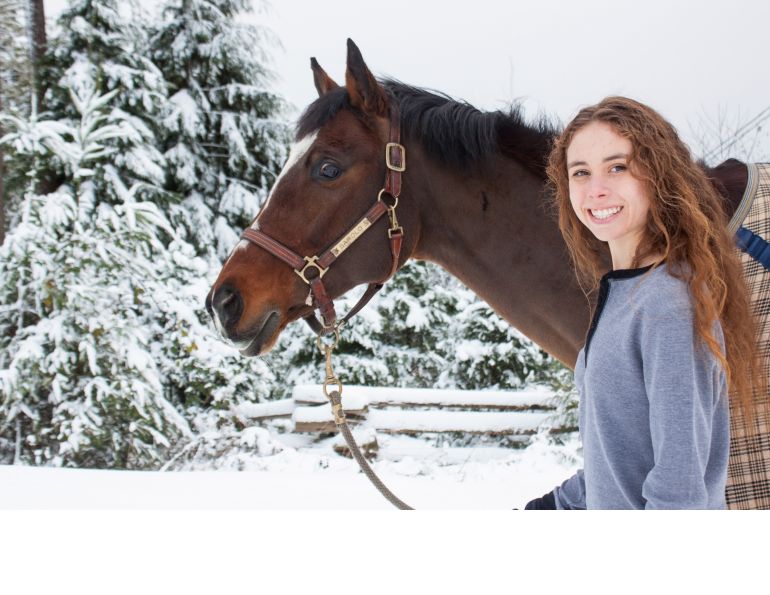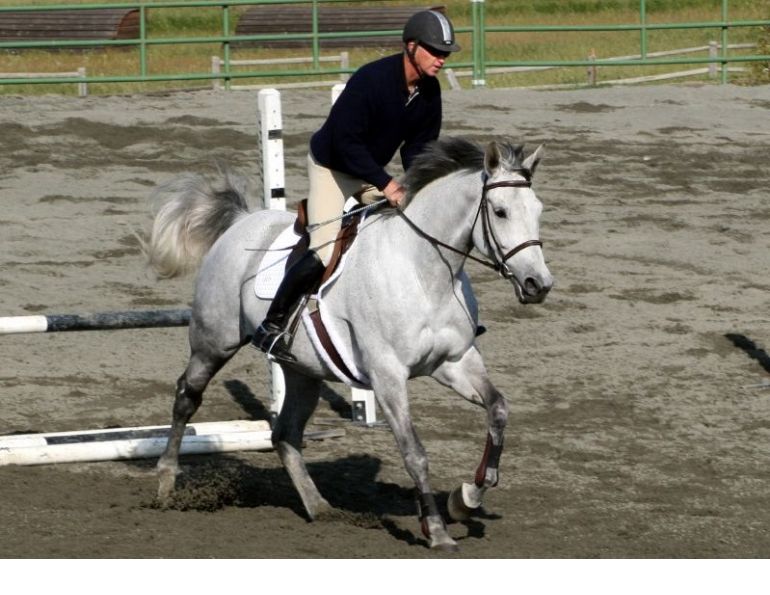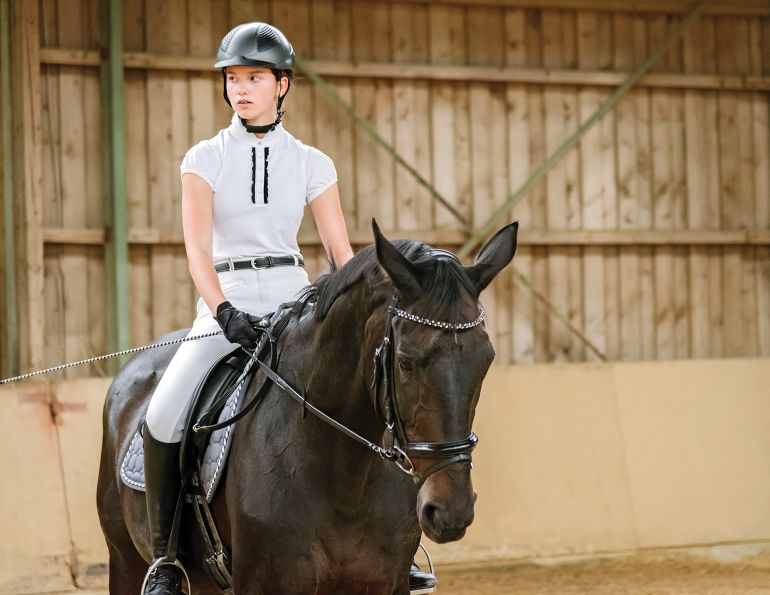By April Clay, M.Ed., Registered Psychologist
It’s not exactly your riding companion of choice. It’s annoying, uncomfortable, can make you sweat, run for the bathroom and become generally immobilized. Fear may not be regarded as your best buddy, but it does have a message to impart.
Feelings of fear and apprehension can be thought of like an “alarm” going off. This alarm is the fight or flight response, a natural change in your body that happens as a result of feeling threatened either physically or psychologically. Riders, at some point in their careers, usually know physical fear. After all, you are aware that there is a certain amount of risk associated with piloting a thousand pound animal around and over obstacles.
Reoccurrences of physical fear can be confusing and really interfere with your riding pleasure. Anyone who has known the torture of feeling the intense desire to ride, coupled with a sick sense of dread knotted in the centre of their being, knows what I am talking about. Some even give up at that point, exhausted from the inner struggle. Fortunately, that is not your only choice. There are things you can do, skills you can learn, to get yourself back to all that fun you’ve been missing.
Feel the Fear
So you’re scared. Good — great in fact. Welcome to the human club, we’re a big group and mostly friendly. Fear, like many other emotions, can be considered a kind of “signal.” In this case, the message is “look out, something could happen to you.” It’s a message worth listening to. Riding can be a dangerous sport.
So never ever deny how you feel. Too many riders try to deny their feelings, act tough and white knuckle their way through things. It really doesn’t work. Accept what your body is trying to tell you, and know you will have some control over how you interpret and ultimately deal with the message you are being given. Although you may be tempted to be impatient with these uncomfortable thoughts and sensations, do try to tolerate their presence. You can’t be anywhere in this moment other than “where you are,” and accepting this is a vital first step to change. You cannot move anywhere until you admit to yourself “this is what’s happening to me right now.”
Assess the Fear
Now what is it that you are afraid of exactly? Is it a repeat of a fall you have had? Is it getting bucked off? Being run away with? If you have had a bad accident, then you need to try to understand how and why it happened. Some accidents do have reasons: my horse was too fresh, I was over-faced, and I took that turn way too tight. Simply understanding the elements of what happened will make you feel better. The “known” has a nice way of calming us all down.
Some accidents are just that: accidents. There is no analysis that can bring you an answer. It was out of your control; events collided and it happened. If this is the case, remember that the odds of the same thing happening again are likely small.
It is common for some riders to carry more awareness of physical risk than others. This is not wrong, and should not be approached with the idea of eliminating this fear, but rather, managing it like any other riding problem. It is especially common for older amateur riders to experience such an awareness, as time and experience has taught them that sometimes things do go wrong. As well, age typically brings with it an understanding that injuries take longer to heal and accidents can mean time away from work or responsibilities with loved ones. Again, these are pretty normal thoughts; however, they should not be allowed to dictate each and every ride.
Make a List of Resources
What resources do you have to help you deal with the risk involved, and reduce it? Examples of your resources might be a coach, years of riding experience, or the ability to do an emergency dismount. There are always tools you can use now, and others you can develop.
You can think of the relative risk of riding as always being present, and understand that at times this risk becomes larger and more prominent in our minds.
Laura, a junior rider who had a serious fall that left her badly shaken, made the following list of resources for herself: eight years of riding experience, an understanding coach, physical fitness, knowledge about my horse, time, reasonable goals, and a love of riding. This inventory helped Laura to begin to see that she had skills, assets and people to help her regain her confidence.
Make a Scale of Your Fear
Break it down; you want to go from a nameless overwhelming physical feeling to a more concrete sense of what it is you think you cannot handle. What is your “least frightening” to “most frightening” situation? Try not to get irate with yourself when you realise this scale represents fears you never used to have. You might think, “but I used to be able to jump three feet without even thinking about it, what is wrong with me?” Nothing is wrong with you. You have simply had an experience that has changed how you view the risks associated with riding. It can change again.
Laura’s accident occurred while riding to an oxer, so her scale went from her least anxiety-provoking situation to her most in five steps. This may be enough of a breakdown for you, or ten steps may be needed. Laura’s breakdown looked like this: 1 - riding over a pole on the ground; 2 - jumping a cavaletti; 3 - jumping a two foot vertical; 4 - jumping an in-and-out with an oxer at the end; and 5 - riding to an oxer from a long approach by itself.
So Laura started visualizing the smallest step on her scale, the ride to a pole on the ground. She did this after spending a few minutes relaxing her body and regulating her breathing. If at any time Laura began to feel nervous or agitated, she stopped her “movie” and went back to relaxing. She did not rush herself through the process, but instead took her time with these images, reacquainting her mind with her skill and confidence in a safe place — her home.
Restart Your Brain
Once you get ready to face the real thing, your mind will want to go all crazy with the “look out, its going to happen again,” and “I can’t do this anymore, its useless,” or “why don’t you just take up basket weaving already? It’s a lot safer.”
You must be ready with some replacement thoughts. These are thoughts that you identify as productive and helpful and can be used to keep your mind on the task at hand. When she was riding to jumps, Laura decided to switch her focus between certain key phrases. They were “rhythmic pace” and “sit deep and square.” These thoughts helped Laura tell her body what to do rather than let her mind drift to past images that were frightening for her. It also kept her mind anchored firmly in the here and now. One thing fear does really well is take you out of the moment. It either sucks you back into the past to re-experience a scary experience, or catapults you into the future and the world of “what if?”
Make a Plan
One annoying feature of fear: it tends to make you feel helpless and ineffective. Creating a plan for yourself helps offset this trend. Ideally, you make this plan with your coach so it can be reflected in your upcoming lessons. In Laura’s case, she and her trainer mapped out five lessons that reflected her visualization work. Each lesson was to begin with a relaxed warm-up, and Laura was permitted at any time to ask for a “time out” to refocus herself if she felt her fear taking over. It was equally important for each session to end on a positive note, even if this meant going back to a previous step. The overriding goal of each ride was to increase Laura’s sense of control and confidence.
Perspective and Patience
Do try to keep perspective when working through your fear issues. Remember that this is one time frame in a series of many in your riding career. It’s not your entire riding self. Most riders will have the challenge of facing their physical fear at one point or another. As for patience, consider this journey with fear to be an intriguing one worthy of all the time it takes.
To read more articles by April Clay on this site, click here.
Main photo: Jess Hallas-Kilcoyne - When fear tries to take your thoughts away, be ready with replacement thoughts to keep your mind on the task at hand.




